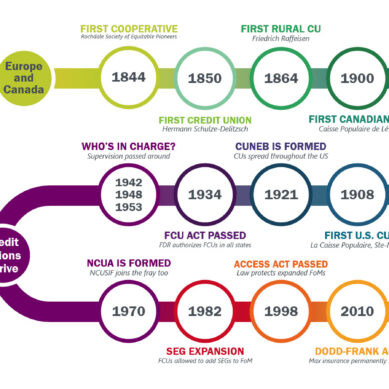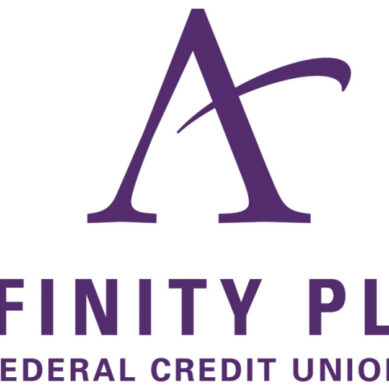
In the first week of this educational series, I introduced readers to the CAMELS system. A measure of a credit union’s soundness and safety, graded by NCUA examiners on a 5-point scale, where 1 indicates strong performance and a 5 is in dire straits.
The CAMEL rating system has been around for a while–thirty-five years in fact. In 1987, the NCUA adopted the system as a means of evaluating the performance and risk profile of a credit union, making it easier for examiners to grade the institution on financial, operational, and managerial grounds.
It wasn’t until 1997 that the “S” (Sensitivity to Market Risk) was first introduced and adopted by the Federal Financial Institutions Examination Council (FFIEC). At the time, however, the NCUA felt that credit union balance sheets were not complex enough to warrant adopting the new component, opting to stick with the existing CAMEL system.
Fast forward twenty-five years and the NCUA has changed its tune. Credit unions have gotten bigger with more complex product offerings. NCUA accounted for this with modifications to the system, but ultimately felt that the industry had evolved to the point that adoption of the “S” component was necessary. The rule went into effect April 1, 2022.
Let’s do a deeper dive into what makes the system up.
C is for Cookie Capital Adequacy
Throughout this series, I have touched on capital adequacy and net worth. In the CAMELS system, the C governs that net worth by categorizing a credit union into one of five possibilities: “well capitalized,” “adequately capitalized”, “undercapitalized,” “significantly undercapitalized,” and “critically undercapitalized.”
To be considered well-capitalized, the credit union needs a net worth-to-asset ratio of 7 percent or higher. If the credit union is at 6 percent, they’re considered “adequately capitalized.” From there, things start to get dicey.
That said, in Q4 2021, NCUA reported that the credit union system as a whole had a net worth ratio of 10.26 percent. A slight drop from the 10.32 percent a year ago, but still well above the well-capitalized threshold. In 2019, pre-COVID, net worth for the system was at a whopping 11.37 percent.
When evaluating a credit union’s capital adequacy though, it’s not as simple as checking the box on that net worth ratio. The examiner will review a variety of areas and how they interact with each other, such as the composition of the capital, loan and investment concentrations, field of membership, earnings, etc.
To earn a coveted rating of 1, the credit union needs a very secure capital position, including the aforementioned net worth ratio, that they’re complying with risk-based net worth requirements, and have no significant issues that might affect capital. A 5 on the other hand is reserved for those credit unions that are severely undercapitalized and that are at risk of insolvency.
A is for Asset Quality
Moving on to “A”, asset quality is an evaluation of the credit union’s loan concentration and other major assets, and any risk factors that might affect capital and earnings. We’re talking loans, investments, other real estate owned, etc. How well the credit union manages credit risk also plays into the rating outcome.
How well is your credit union documenting and executing its loan underwriting policies and procedures? Is it ensuring loan concentration is appropriately spread out? Is the allowance for loan and lease losses adequately funded? These and other factors are all entered into consideration by the examiner.
Like capital adequacy above, a 1 indicates the credit union has well-defined and followed practices, solid asset quality, and is of little supervisory concern. Alternatively, a 3 might indicate possible threats that have garnered the attention of the examiner. Perhaps risk isn’t being managed well enough. Or loans are too heavily concentrated in one area. In this instance, corrective action will likely be required.
M is dialed for Management
If this sounds sort of ambiguous, well it is. This is the most subjective evaluation of the CAMELS system, as examiners are tasked with reviewing the credit union’s management structure, its compliance with laws and regulations, its compensation practices, and in general, safe and ethical behavior. The board of directors is held to task here too, as expectations don’t end at the C-suite. Even if they’re not involved in the day-to-day work, their oversight and guidance is critical.
But don’t misconstrue my comments as suggesting the M is unimportant. On the contrary, NCUA even goes so far as to say that “the management component is given special consideration when assigning the composite score.” Management’s responsibilities are far reaching and cover corporate governance (compensation and benefits), strategic planning (business plans, operational plans, and information systems and technology considerations), internal controls (record keeping, auditing, computer security, etc.), and other relevant areas.
Where other areas identify specific issues with the credit union’s balance sheet and risk, management gauges how well the team responds to those issues. A rating of 2 might indicate that while significant risks might arise, management is up to the task of identifying and addressing those risks promptly. Whereas a 4 could not only indicate significant risks, but management’s inability to correct the situation.
E is for Earnings
By now you’re starting to get the picture that there is some overlap in all these items. Poor asset quality affects earnings potential. Or maybe management isn’t managing its resources effectively, resulting in high operating expenses with poor returns.
In the end, the earnings rating is determined by a variety of factors including, but not limited to: the quality and sources of earnings, the credit union’s budgeting and forecasting effectiveness, composition of assets, and quality of earning assets in a changing economic environment.
A rating of 1 says the credit union is earning enough to maintain adequate capital and allowance levels, but not in a risky fashion. A 5 says earnings are lacking with respect to the credit union’s overall condition, growth, and risk factors.
L is for Liquidity (and Asset Liability Management)
Cycling back to the first article, Asset/Liability Management, or ALM, is a risk mitigation process for credit unions whereby they match assets and liabilities with similar maturities or interest rates. Or as the Credit Union Times puts it: “ALM helps credit unions make decisions on what loan, investment and borrowings the financial institution should pursue, as well as the rates to offer, in order to make profitable loans while mitigating risks.”
Management has to be on top of the credit union’s balance sheet structure and liquidity management. Have they implemented the necessary tools to monitor risk and project future outcomes? Do they know what they’ll do if the credit union suddenly has to deal with a liquidity event or excess liquidity? Where a rating of 2 will suggest satisfactory liquidity and ALM practices, a 4 will tell the credit union they have work to do in improving liquidity and shoring up their ALM procedures, as they may be too at risk of the whims of the market.
S is for Sensitivity to Market Risk
Sensitivity to Market Risk is the new kid on the block (for credit unions at least). Let’s check back in with the NCUA for what makes a good program: “Effective risk management programs include comprehensive interest rate risk policies, appropriate and identifiable risk limits, clearly defined risk mitigation strategies, and a suitable governance framework.”
But as clear as NCUA tries to make it, it’s still going to be a head scratcher and, as Chip Filson puts it, a hot button issue this year in credit union exams. In the end, it will come down to how well the credit union can show it has developed risk management practices that mitigate market risk. The good news is that credit unions are already used to managing Interest Rate Risk (IRR), but with increased focus in this area, management and the board had better be able to explain how their model works.
Wrapping up
And there we have it! While by no means an exhaustive explanation of the CAMELS rating system, I hope this and the other articles in this month’s financial literacy series have given you a little more confidence in understanding your credit union’s finances and regulatory requirements.
Did I get anything wrong? Let me know in the comments!






























































